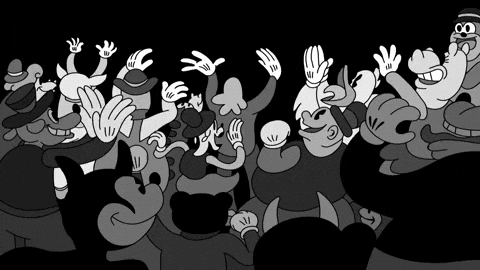Introduction: The Bouncing, Boneless Charm of a Bygone Era
Picture a world untethered by the rigid laws of physics. A character, rendered in bold black ink, bounces perpetually to a jaunty jazz rhythm. When startled, its arm stretches across the screen like pulled taffy to point at an unseen marvel. Its legs, lacking knees, churn in a fluid, circular motion as it scampers away from a mischievous, anthropomorphic teakettle. This is the whimsical, physics-defying universe of Rubberhose animation, the first standardized style to emerge in the American animation industry and a foundational pillar of the entire medium.
Emerging in the 1920s, Rubberhose animation is defined by its most distinct visual trait: “rubber hose limbs.” Characters’ arms and legs are drawn as simple, flowing curves, devoid of articulated joints like elbows, wrists, or knees. This core feature is part of a broader “inkblot” aesthetic, one that grew out of newspaper comic strips and is characterized by heavy black inks on simple backgrounds, expressive “pie eyes” (full black eyes with a triangular slice removed), and, famously, white gloves. These elements combined to create a visual language that was instantly recognizable, endlessly malleable, and perfectly suited to the chaotic energy of the Jazz Age.
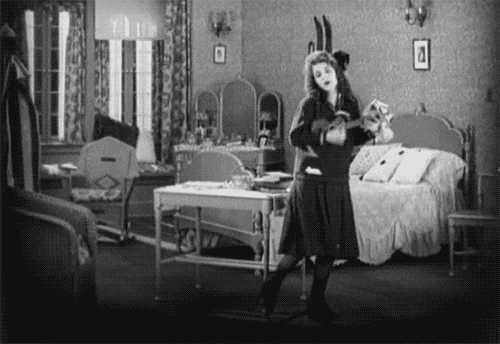

But this style was far more than a mere artistic quirk. It was a revolutionary response to a unique set of industrial, economic, and technological pressures. What confluence of factors gave birth to this surreal and energetic art form? Why did a style that so thoroughly dominated the 1920s and early 1930s seemingly vanish from the screen? And, most fascinatingly, how has it staged a remarkable comeback nearly a century later, influencing everything from blockbuster video games to corporate branding in the digital age? This report delves into the history, mechanics, and enduring legacy of Rubberhose animation, tracing its journey from a pragmatic production shortcut to a celebrated and surprisingly modern aesthetic.
The initial strangeness of Rubberhose animation, its joyful departure from realism, is not merely a stylistic choice; it is a visual manifesto. Early live-action cinema was, by its nature, bound to the physical world it recorded. Animators, making the leap from the static panels of comic strips to the dynamic world of motion pictures, were suddenly gifted with the dimension of movement. Instead of immediately striving to replicate reality, the pioneers of the medium explored what was utterly impossible in live-action film. The rubber hose limb, therefore, was not just an easier way to draw; it was a declaration of independence from the tyranny of anatomy and physics. It made the medium’s unique potential its core aesthetic, celebrating its own unreality and establishing animation as a realm of pure, uninhibited imagination.
Chapter 1: The Inkblot Revolution – Origins of an Animation Style
The emergence of the Rubberhose style was not an accident of artistic taste but a brilliant and pragmatic solution to the immense production pressures facing the burgeoning American animation industry of the 1920s. As theatrical animated shorts exploded in popularity, studios found themselves in a frantic race to meet a demand that far outstripped the supply of trained animators and the efficiency of existing production methods. In this high-pressure environment, Rubberhose animation evolved as a system of ingenious shortcuts, an industrial process designed for speed, clarity, and scalability.
The Economic Engine of Early Animation
The 1920s represented a period of explosive growth for animated cartoons. They were a consistent and popular feature of theatrical programs, but the production process was incredibly labor-intensive. Studios were essentially content factories, with figures like Walt Disney noting that his team had to produce “seven hundred feet of film every two weeks” to meet contractual obligations. With a limited workforce and rudimentary technology, the need for efficiency was paramount. Every aspect of the animation process had to be streamlined to make production feasible and profitable. It was out of this economic necessity that the core tenets of the Rubberhose style were forged.
The Rise of an Industrial Art Form (1920s)
Rubberhose wasn’t just a quirky style; it was a high-speed solution to the massive demand for animated shorts in the 1920s. Studios needed to be content factories, and this style was their assembly line, prioritizing efficiency and clarity above all else.
The Animation Assembly Line
700 ft
Of film required every 2 weeks
The chart illustrates the core design principles that made this incredible speed possible.
Efficiency by Design: The Hallmarks of Rubberhose
The defining characteristics of Rubberhose animation can be understood as a series of clever solutions to the challenges of mass-producing hand-drawn content on a tight schedule.
- Jointless Limbs: The style’s namesake feature was its greatest time-saver. Animating limbs as simple, curving hoses completely eliminated the complex and time-consuming task of drawing articulated joints. Knees and elbows require careful attention to anatomy, perspective, and proportion to look correct when they bend. By replacing them with a flexible tube, animators could create the illusion of movement with far fewer drawings and less technical skill, allowing for a much faster workflow.
- Simple, Rounded Forms: The era’s most iconic characters, from Felix the Cat to the early Mickey Mouse, were constructed from basic geometric shapes—primarily circles and tubes. This simplification was a deliberate production strategy. Round, flowing shapes are easier and faster to draw consistently across thousands of individual frames than complex, angular designs. Animator Bill Nolan’s influential redesign of Felix the Cat in the mid-1920s, which gave the character a rounder and smoother look, was explicitly done to make him easier and quicker to animate, cementing this principle as an industry standard.
- White Gloves: The ubiquitous white gloves worn by characters like Mickey Mouse were a stroke of practical genius. On black-and-white film, depicting black hands against a black body rendered them nearly invisible, making intricate hand gestures impossible to read. The simple addition of white gloves provided immediate and essential visual contrast, ensuring that hand movements were clear and expressive to the audience.
- “Pie Eyes”: The simple “pie-cut” eye—a black circle with a small wedge removed—was another elegant solution. It was capable of conveying a wide range of emotions with minimal detail and was incredibly easy to animate. A slight rotation of the “cut” could shift the character’s gaze and expression, providing maximum emotional impact for minimal artistic effort.
These elements, born from the need for speed and clarity, formed a cohesive visual system. The style’s lineage can be traced directly from the “inkblot” aesthetic of newspaper comic strips, which already featured bold lines and simplified characters. Animators adapted this existing visual language for the screen, adding the crucial new dimension of continuous, fluid, and impossibly elastic motion.
This systematic approach to creative production bears a striking resemblance to the principles behind modern digital design systems. A contemporary design system utilizes a library of predefined, reusable components (such as buttons, forms, and icons) and a set of rules (governing spacing, typography, and color) to allow teams of developers and designers to build complex digital products quickly and consistently. The animation studios of the 1920s faced an analogous challenge: building a complex product—a seven-minute cartoon—with a team of animators under extreme time constraints.
The “Rubberhose system” functioned in precisely the same way. It provided a set of reusable components: circular heads, pie eyes, white-gloved hands, and hose-like limbs. It also established a clear set of rules: characters must always be in motion, joints are to be disregarded, and forms must remain simple and rounded. This system empowered any animator in the studio, regardless of their individual skill level in anatomy or perspective, to pick up a character and produce a scene that was consistent with the overall look and feel of the production. It was a model of creative industrialization, ensuring that the final product could be delivered on schedule and on budget. In this way, the charmingly chaotic world of Rubberhose animation can be seen as a direct ancestor to the highly structured, efficiency-focused design methodologies that power much of today’s digital economy.
Chapter 2: The Pioneers and Their Playgrounds – Architects of a Wacky World
The Rubberhose era was defined by a handful of visionary creators and innovative studios that not only standardized the style but also pushed its creative boundaries. Their work established the visual language of American animation and created a pantheon of characters that remain cultural icons. This period was also marked by a fascinating creative tension, primarily between the surreal, anarchic “East Coast” style, championed by New York’s Fleischer Studios, and the more structured, character-focused “West Coast” approach that was being perfected by Walt Disney and Ub Iwerks in Hollywood.
East Coast vs. West Coast: A Tale of Two Styles
The 1920s and 30s were dominated by a creative rivalry. New York’s Fleischer Studios produced gritty, surreal, jazz-infused cartoons, while Hollywood’s Disney-Iwerks team focused on polished, character-driven stories that would eventually set the industry standard.
This radar chart compares the defining characteristics of the two animation powerhouses of the era.
The Foundational Figures
While many contributed to the style’s development, a few key figures were instrumental in its creation and popularization.
- Bill Nolan: Often credited as the inventor or at least the key refiner of the Rubberhose style, animator Bill Nolan was a pivotal figure. His most significant contribution came during his work on the Felix the Cat series in the mid-1920s. By redesigning Felix with a rounder, softer, and more fluid form, Nolan not only made the character cuter but, more importantly, streamlined the animation process. This redesign, which emphasized flowing curves over sharp angles, became a foundational step in codifying the efficient, production-friendly aesthetic that would define the era.
- Otto Messmer & Pat Sullivan: The saga of Felix the Cat is the story of animation’s first true superstar. Debuting in the 1919 short Feline Follies, Felix captivated audiences with his cleverness, mischievous personality, and his magical ability to solve problems, often by transforming his own tail into a useful tool. However, his creation is shrouded in one of animation’s most enduring controversies. The on-screen credit and public recognition went to producer Pat Sullivan, who owned the studio and the copyright. Yet, animation historians and Sullivan’s own employees have overwhelmingly credited lead animator Otto Messmer as the true creative force behind the character’s design and personality. Messmer, a modest and publicity-shy artist, based Felix’s expressive movements and down-and-out personality on the screen persona of Charlie Chaplin, aiming to create a character driven by thought and emotion, a significant step beyond the simple gag cartoons of the time.
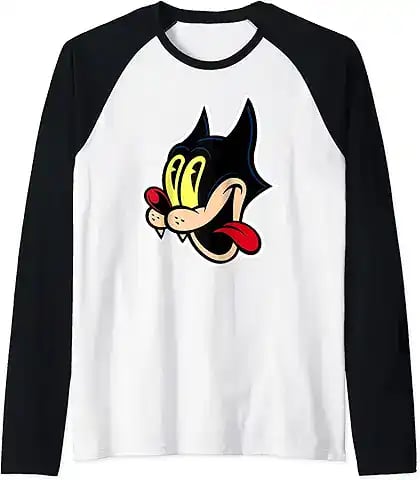
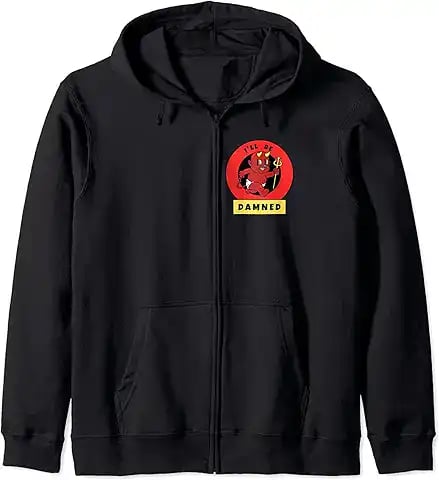


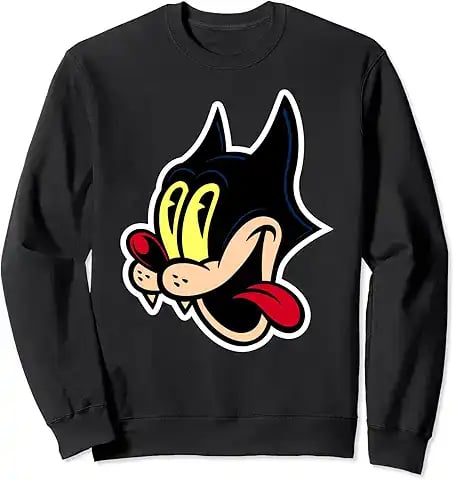
The East Coast Anarchists: Fleischer Studios
From their studio in New York City, brothers Max and Dave Fleischer became the masters of a uniquely urban and surreal brand of Rubberhose animation. Their work was steeped in the chaotic energy of the Jazz Age, characterized by gritty cityscapes, bizarre transformations, and a dark, often macabre sense of humor.
The Fleischers were relentless innovators, responsible for several technological breakthroughs that profoundly shaped the industry. Max Fleischer invented the Rotoscope, a device that allowed animators to trace over live-action footage to create remarkably fluid and realistic movement, a technique they used for their early star, Koko the Clown. They were also pioneers in integrating sound, creating the “Bouncing Ball” for their Song Car-Tunes series, which invited audiences to sing along. Their 1926 film My Old Kentucky Home featured synchronized sound—including a line of dialogue—and the bouncing ball, predating Disney’s Steamboat Willie by two years.
Their iconic characters embodied the studio’s edgy style. Betty Boop, a caricature of a flapper singer, was a mix of childlike innocence and overt sexuality that was groundbreaking for its time.
Popeye the Sailor, adapted from a comic strip, became a cultural phenomenon, his brawling adventures perfectly suited to the studio’s brand of slapstick violence. The Fleischers’ world was one of phantasmagorical wonder, where inanimate objects pulsed with life and cartoons could veer into genuinely unsettling, nightmare-like territory, as seen in the surreal masterpiece Swing You Sinners! (1930) and the hauntingly beautiful Betty Boop adaptation of Snow White (1933), which featured jazz legend Cab Calloway.
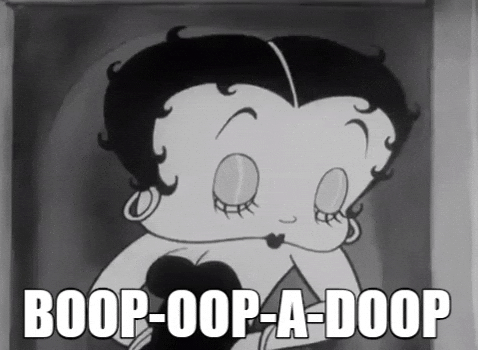

The West Coast Polishers: The Disney-Iwerks Engine
Meanwhile, in Hollywood, Walt Disney and his brilliant lead animator Ub Iwerks were taking the Rubberhose style in a different direction. They were the key popularizers who elevated the aesthetic to its peak of commercial success before ultimately engineering the industry’s shift away from it.
Their early work on Oswald the Lucky Rabbit for Universal showcased a more polished and character-centric application of the style. After losing the rights to Oswald in a contract dispute, they created Mickey Mouse. The release of Steamboat Willie in 1928 was a watershed moment. While not the first cartoon with sound, it was the first to masterfully and meticulously synchronize the on-screen action to a musical score and sound effects, creating an immersive and exhilarating experience that captivated the world and established the Disney studio as an industry leader. Though Disney and Iwerks perfected the mechanics of Rubberhose, Walt’s ultimate ambition lay in achieving greater realism and emotional depth in animation, a goal that would soon lead him to abandon the very style that had brought him his first major success.
This geographical and philosophical divide between the New York-based Fleischers and the Hollywood-based Disney studio created a powerful creative rivalry that defined the era. The Fleischers’ work was a direct product of its environment: the chaotic, diverse, and Vaudeville-infused energy of the city. Their cartoons are often a series of brilliant, surreal gags strung together, reflecting a creative process where supervising director Dave Fleischer would reportedly ask his animators of their drawings, “Where’s the gag?”.
Disney, on the other hand, had relocated to the center of the narrative film industry. His focus gradually shifted from isolated gags to cohesive storytelling, character development, and the creation of a polished, universally appealing product that aligned with the Hollywood model. This was not merely a difference in style but a fundamental difference in worldview. The Fleischer cartoons celebrated the absurdity of the moment, while Disney’s work aimed to build a narrative arc and forge a lasting emotional connection with the audience. The eventual decline of the Rubberhose style, therefore, was not simply a matter of one studio being “better” than the other; it was the triumph of the Hollywood narrative paradigm over the more experimental, gag-driven, Vaudevillian style of New York. Disney’s approach was more scalable and better suited for the creation of feature films and global brands, a model that would ultimately set the standard for the entire animation industry for decades to come.
| Pat Sullivan Studio | Otto Messmer, Pat Sullivan |  Felix the Cat | Animation’s first superstar; personality-driven animation based on Charlie Chaplin; clever, surreal transformations and simple gags. |
| Fleischer Studios | Max & Dave Fleischer | 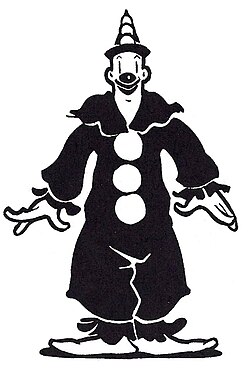 Betty Boop, Popeye, Koko the Clown | “East Coast” style; gritty, urban settings; surreal, macabre, and often dark humor; infused with jazz culture; highly innovative (Rotoscope, Bouncing Ball). |
| Disney Bros. Studio | Walt Disney, Ub Iwerks | 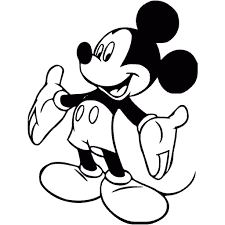 Oswald the Lucky Rabbit, Mickey Mouse | “West Coast” style; highly polished and refined; focus on character appeal and story; masterful synchronization of sound and music; often set in rural/farmyard environments. |
| Walter Lantz Prod. | Walter Lantz | 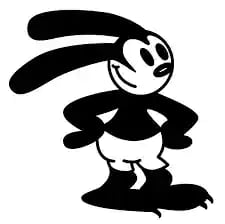 Oswald the Lucky Rabbit (post-1928) | A transitional style; redesigned characters to be “cuter” and more appealing, moving away from the pure anarchy of early Rubberhose toward the softer Disney aesthetic. |
Chapter 3: Anatomy of the Absurd – Deconstructing the Rubberhose Aesthetic
To the modern eye, the world of a Rubberhose cartoon can seem like pure, unadulterated chaos. Yet, beneath the surface of flailing limbs and bouncing scenery lies a surprisingly consistent internal logic. The aesthetic is governed by a set of “rules” that, while utterly defying the laws of our reality, create a cohesive and predictable universe of their own. This world is built on three core principles: perpetual motion, the malleability of reality, and the inescapable rhythm of jazz.

The Law of Perpetual Motion
A foundational rule in the Rubberhose universe is that nothing is ever truly static. Characters are in a constant state of motion, even when standing still. They sway, bob, or bounce in time with the background music, their faces cycling through a series of expressions. This constant, rhythmic “double bounce” or “idle cycle” keeps the screen perpetually alive and energetic.
Furthermore, movement is fast, furious, and direct. Animators in this era did not employ the principles of “slow in and slow out” (or “easing”), which would later be used to create more realistic acceleration and deceleration. Instead, characters burst into action and stop on a dime, moving from one frantic sequence to the next with no time to pause.
Physics as a Suggestion, Reality as a Plaything
In the Rubberhose world, the laws of physics are not just bent; they are gleefully shattered. This creates what has been described as a “plastic world,” where any object or character has the potential to be molded or shaped into something else. This principle manifests in several key ways:
- Animate Inanimates: Everyday objects frequently spring to life, joining in the action or becoming part of a musical number. A steering wheel can replace a spaceship’s control panel, or a line of gravestones can form a menacing chorus line.
- Anatomical Absurdity: Characters are not bound by the limitations of their own bodies. They can detach their heads or limbs for a quick sight gag, as Oswald the Lucky Rabbit does in Broadway Folly (1930).
- The Body as a Toolkit: Perhaps the most iconic expression of this principle is the transformation of body parts into useful tools. Felix the Cat’s tail was famously versatile, doubling as a fire hose in The Smoke Scream (1928) and a car engine crank in Woos Whoopee (1928). In Steamboat Willie, Mickey Mouse’s torso is pulled out like a long sausage, and he plays a cow’s teeth like a xylophone. This complete disregard for anatomy allowed for an endless stream of surreal and inventive gags.
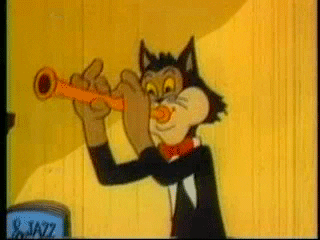
The Rhythm of Jazz
The frantic, bouncy energy of Rubberhose animation is inextricably linked to the syncopated rhythms of the Jaunary jazz soundtracks that accompanied nearly every short. The constant bobbing of characters and synchronized movements of the environment are timed to the beat of the music. This turns the cartoon world into a living, breathing musical instrument, where every action is part of a larger, rhythmic dance. Jazz was the pulse of the animation, a key component of its entertainment value and a reflection of the vibrant 1920s musical culture.
Surrealism and the Macabre
Beyond the simple gags, the Rubberhose style was deeply influenced by the European art movements of Surrealism and Expressionism, which were at their peak in the 1920s. Many animators were trained artists and cartoonists who absorbed the principles of these movements, which explored dream logic, subconscious fears, and distorted reality. This influence is most apparent in the work of the Fleischer brothers, whose cartoons often veered into genuinely unsettling and macabre territory. The 1930 short Swing You Sinners! is a prime example, described by animation historians as “a nightmare captured on film,” with its wild-eyed chicken scatting against a warping, menacing background of singing ghosts and gravestones. This willingness to explore darker, psychological themes added a layer of strange and enduring depth to the style.
The principles that govern this animated world, while seemingly chaotic, share a fundamental goal with a very modern discipline: User Experience (UX) design. Specifically, the constant motion and exaggerated feedback of Rubberhose animation can be seen as an early, analogue precursor to the digital “micro-interactions” that define modern user interfaces. In contemporary UX design, micro-interactions—such as a button that visually depresses and bounces back when clicked, or a list that smoothly animates into place—are used to provide clear feedback, guide the user’s attention, and make a digital interface feel more responsive, engaging, and “alive.”
The animators of the 1920s were solving a similar problem for a different medium. To hold the attention of a cinema audience experiencing the new marvel of animated cartoons, they needed to ensure the screen was never static or unresponsive. The principle of “constant motion” ensured the visual field was always active and engaging. The tight synchronization of action to a predictable musical rhythm created a satisfying and easy-to-follow experience, much like how well-timed UI animations make an app feel intuitive and pleasing to use. Most importantly, the exaggerated reactions of characters and objects to every stimulus served as a powerful form of visual feedback, confirming the impact of an action in a loud, clear, and entertaining way. While the context is a century apart, the underlying psychological principle remains the same: using dynamic, responsive motion to create a clear and engaging experience for the viewer.
The Shift to Realism: End of an Era (Mid-1930s)
The bouncy, chaotic world of Rubberhose was deliberately replaced by a new paradigm. Walt Disney’s vision, coupled with game-changing technology, pushed the entire industry towards realism, depth, and emotional storytelling, paving the way for feature films.
This flow shows the key innovations that led to the decline of the original Rubberhose style.
Chapter 4: The End of an Era – The Shift Towards Realism
The reign of Rubberhose animation, for all its creative vibrancy, was remarkably brief. By the mid-1930s, the style that had defined American animation began to fall out of favor, replaced by a new paradigm focused on realism, weight, and emotional subtlety. This was not a gradual evolution or the simple fading of a trend; it was a deliberate, industry-wide pivot, driven by a combination of transformative new technologies and the singular, ambitious vision of Walt Disney, who sought to elevate animation from a theatrical novelty into a respected and highly profitable art form.
The Disney Disruption and the Pursuit of Believability
Walt Disney was the primary catalyst for this monumental shift. While he and Ub Iwerks had achieved immense success by perfecting the Rubberhose style with Mickey Mouse, Disney viewed it as a stepping stone, not a destination. He saw animation’s true potential as a “surrogate substitute for live action,” a medium that could tell sophisticated stories and create believable characters that adhered to the laws of physics, even while performing impossible feats. This philosophical departure from the anarchic surrealism of the Rubberhose era set the stage for a complete aesthetic overhaul of the industry.
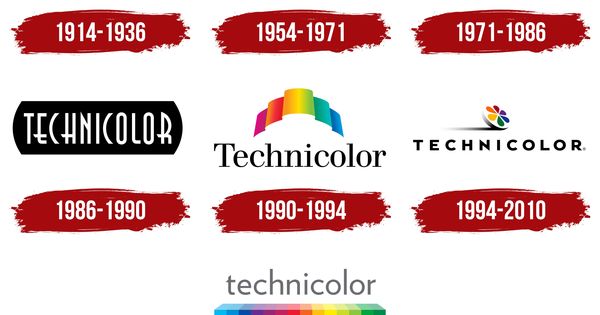

Technological Catalysts of Change
Two key technological innovations, both championed and monopolized by Disney, accelerated the decline of the old style.
- Technicolor: The advent of the three-strip Technicolor process in the early 1930s was a revolution. Color introduced a new dimension of depth and realism that made the flat, black-and-white inkblot world seem primitive and outdated by comparison. Disney shrewdly negotiated an exclusive contract for the use of Technicolor in animation for several years, giving his studio a powerful competitive advantage. The success of color shorts like Flowers and Trees (1932) demonstrated the audience’s appetite for this new, more vibrant and believable world.
- The Multiplane Camera: To further enhance the illusion of realism, Disney’s studio invested heavily in developing the multiplane camera. This enormous device allowed animators to shoot through multiple layers of artwork (e.g., a foreground, a character, and several background layers) on stacked planes of glass, creating a true sense of depth, parallax, and dimension that was impossible to achieve with the flat, static backgrounds typical of Rubberhose shorts. The stunning, immersive environments created with this camera, most famously in The Old Mill (1937), set a new standard for animated cinematography.
The Codification of Realism: The 12 Principles of Animation
This new focus on realism was not just intuitive; it was systematically studied and broken down by Disney’s top animators. Their findings were eventually codified by Frank Thomas and Ollie Johnston in their seminal book The Illusion of Life: Disney Animation as the “12 Basic Principles of Animation”. These principles were, in many ways, a direct refutation of the Rubberhose aesthetic.
Principles like “Solid Drawing” emphasized giving characters a sense of three-dimensional form, weight, and balance. “Follow Through and Overlapping Action” dictated that different parts of a body should move at different rates to simulate momentum and flesh. Perhaps most directly, the principle of “Arcs” stated that living things move in smooth, arcing paths, a rule that the jointless, straight-bending limbs of Rubberhose characters explicitly and intentionally broke. These principles were designed to make characters feel as though they were adhering to the laws of physics, a stark contrast to the physics-defying freedom of the earlier style.
Industry-Wide Adaptation
Disney’s commercial and critical success with this new, realistic approach was so immense that it forced the entire industry to adapt or risk becoming obsolete. Distributors, seeing the box-office returns of Disney’s shorts, began demanding a similar level of polish and believability from other studios. In response, characters were systematically redesigned to shed their Rubberhose traits. Walter Lantz’s version of Oswald the Lucky Rabbit and Warner Bros.’ Porky Pig evolved from fat, round, bouncy figures into characters with more defined anatomy, consistent proportions, and believable weight. Even the fiercely independent Fleischer Studios, the last major holdout of the old style, eventually conformed to the more contemporary “West Coast” aesthetic by 1940.
This industry-wide shift was fundamentally a strategic business decision, not just an artistic one. In the early 1930s, the market was saturated with studios producing similar, gag-based Rubberhose shorts. Disney recognized an opportunity to differentiate his product by aggressively pursuing a higher standard of “quality” and “realism”. The expensive investments in Technicolor and the multiplane camera were part of a larger strategy to create a premium product category. By marketing animation as a sophisticated art form capable of the same emotional depth and visual splendor as prestigious live-action films, Disney was able to justify larger production budgets and command higher fees. This culminated in the release of Snow White and the Seven Dwarfs in 1937, a massive financial and critical success that created an entirely new and incredibly lucrative market for animated feature films—a market that other studios, still focused on low-cost shorts, were completely unprepared to compete in. The death of the Rubberhose style was, in effect, a necessary casualty in the birth of the modern, feature-focused animation industry. Disney didn’t just change the style; he changed the business model, and the entire industry followed.
Style vs. Tool: A Modern Distinction
Today, “Rubberhose” means two things. It’s the classic, hand-drawn animation style, but it’s also a popular software plugin for Adobe After Effects that makes it easy to create the *look* of bendy, boneless limbs digitally. This shows how modern tools empower creators to achieve classic aesthetics with incredible efficiency—a core principle of the digital solutions Teracore provides.
The Classic Style
✍️
- Hand-drawn, frame-by-frame
- Labor-intensive process
- Defined by 1920s technology
The Modern Tool
💻
- Digital, procedural animation
- Highly efficient workflow
- Emulates the classic aesthetic
Chapter 5: A Tale of Two Hoses – The Classic Style vs. The Modern Tool
In the contemporary landscape of digital design and animation, the term “Rubberhose” carries a dual meaning, a source of potential confusion that requires clear distinction. On one hand, it refers to the historical, hand-drawn animation style of the 1920s and 1930s. On the other, it is the name of a popular and powerful software tool for Adobe After Effects. Understanding the difference between the classic art form and the modern rigging solution is crucial for appreciating both the style’s history and its contemporary application.
The Style: A Historical Art Form and Production Methodology
As established, the classic Rubberhose animation style was a complete aesthetic and production system that dominated the early golden age of American animation. It was a holistic approach defined by:
- A Visual Aesthetic: Characterized by jointless, tube-like limbs, simple geometric forms, pie eyes, and white gloves.
- A Set of Physical Laws: A world governed by perpetual motion, rhythmic bouncing, and a joyful disregard for anatomy and physics.
- A Production Process: A laborious, frame-by-frame, hand-drawn technique using ink on paper or celluloid (cels), designed for maximum efficiency in a pre-digital era.
- A Cultural Context: Inextricably linked to the black-and-white silent film era, the rise of “talkies,” and the syncopated rhythms of Jazz Age music.
This original form was the product of a specific time, a specific set of technologies, and a specific set of economic pressures.
The Tool: A Modern Digital Rigging Solution
In contrast, RubberHose by Battle Axe is a modern software plugin, specifically a rigging script for Adobe After Effects, a leading application for motion graphics and visual effects. Its function is to radically simplify the process of creating and animating character limbs within a digital, vector-based environment.
Instead of requiring an animator to build a complex digital “skeleton” with joints and inverse kinematics, the RubberHose tool allows them to create a flexible, bendy limb with just a few clicks. The animator defines a start point (like a shoulder) and an end point (like a wrist), and the script generates a customizable “hose” between them. The animator can then control the length, bend, and rotation of this hose with simple, intuitive controls. The tool includes a library of powerful style presets (with names like “Tight Pants”), the ability to add multiple bend points to a single hose to create complex curves like S-shapes or fingers, and features for easily duplicating and managing limbs.
The Connection and The Crucial Difference
The relationship between the style and the tool is one of homage. The RubberHose tool is named for the classic animation style because it enables modern animators to emulate the look of those boneless, flexible limbs with remarkable ease and digital efficiency. It provides a shortcut to achieving the aesthetic of the 1920s.
The fundamental difference lies in the process. Classic Rubberhose animation was an additive, manual process requiring an artist to draw dozens of individual frames to depict a single movement. The modern RubberHose tool uses a procedural, digital process. The animator sets keyframes for the start and end positions of a limb, and the software, using mathematical expressions and vector paths, automatically calculates and renders all the “in-between” frames of the smooth, bending motion. The tool makes the iconic look of Rubberhose animation accessible to a single motion designer, but it does so by abstracting away the painstaking, frame-by-frame method that originally defined it.
The existence and popularity of the RubberHose tool is a perfect illustration of a significant trend in modern creative technology: the “proceduralization” of historical aesthetics. Across various creative fields, complex, craft-intensive styles from the past are being analyzed, deconstructed, and codified into software tools, filters, and plugins. These tools allow contemporary creators to achieve the visual result of a historical process without needing to master the original, time-consuming craft. This is analogous to a photographer using a digital filter to replicate the grain and color palette of vintage Kodak film without ever setting foot in a darkroom, or a musician using a software synthesizer to recreate the sound of a rare 1970s analogue keyboard.
This trend democratizes style, making sophisticated visual language accessible to a wider range of creators. However, it also has the potential to detach the aesthetic from the original context, skill, and labor that produced it. It demonstrates a core principle of modern digital enterprise: technology’s power to lower the barrier to entry for high-quality creative execution. The RubberHose tool empowers a single artist to produce animation that once required an entire studio department, showcasing how modern tools enable creators and businesses to scale their output, increase efficiency, and achieve sophisticated results with unprecedented speed.
The Rubberhose Renaissance (2010s – Present)
A century later, the style is back! Driven by nostalgia and a reaction against generic corporate art, Rubberhose has seen a massive revival in video games, TV, and branding. The success of the video game *Cuphead* was a major catalyst for this modern comeback.
This timeline chart highlights key modern projects that have revived the Rubberhose aesthetic.
Chapter 6: The Rubberhose Renaissance – A Modern-Day Revival
Far from being a forgotten relic confined to animation history archives, the Rubberhose style is experiencing a vibrant and powerful modern renaissance. A century after its inception, its whimsical charm and chaotic energy have found a new and enthusiastic audience. This revival is driven by a potent combination of nostalgia, the unique creative possibilities the style affords, and a cultural reaction against the perceived sterility of recent design trends. This comeback is most visible in three key areas: video games, television animation, and corporate branding.

Case Study: The Cuphead Phenomenon
The primary catalyst for the contemporary resurgence of the Rubberhose aesthetic is undeniably the 2017 video game Cuphead. Developed by the independent Studio MDHR, led by brothers Chad and Jared Moldenhauer, the game is a “run and gun” action title whose entire visual and auditory identity is a meticulously crafted homage to the cartoons of the 1930s, particularly the surreal and often menacing work of Fleischer Studios.
What made Cuphead so revolutionary was its astonishing dedication to authenticity. The Moldenhauer brothers and their team did not simply imitate the look of Rubberhose animation; they resurrected the entire production process. The game’s visuals were created using the same painstaking techniques of the era: every frame of animation was hand-drawn on paper and hand-inked onto traditional animation cels. The lush, detailed backgrounds were painted with watercolors, and the game’s energetic, big-band soundtrack was recorded with a live jazz orchestra. This commitment was so successful that many observers initially believed the studio had licensed footage from actual 1930s cartoons. The game was a massive critical and commercial success, introducing the Rubberhose aesthetic to a new generation and creating a global cultural touchstone that is now synonymous with the style.
Animation’s Nostalgic Nods
Following the trail blazed by Cuphead, the style has appeared frequently in modern animated productions, often as a direct homage.
- Disney’s Mickey Mouse (2013-2019): Disney’s own award-winning series of shorts brought its most famous character back to his roots. The series masterfully blended the classic Rubberhose character designs and slapstick feel of the original 1930s shorts with modern production techniques, using digital tools like Toon Boom Harmony and Flash to streamline the animation process while retaining the vintage charm.
- The Cuphead Show! (2022-): The success of the game led to a Netflix animated series. While unable to replicate the game’s fully hand-drawn cel animation for a television production budget and schedule, the show’s creators adapted the style for a modern digital pipeline. They used the software Harmony to create digital “puppets” or rigs for the characters, but supplemented this with a large volume of hand-drawn “special poses” and effects to ensure the animation felt more traditional and less like sterile, computer-generated movement.
- Character Homages: The style is often used for specific characters to create a deliberate visual contrast. Spinel, the antagonist of Steven Universe: The Movie (2019), is animated in a fluid, bouncy Rubberhose style that starkly contrasts with the more contemporary anime-influenced style of the other characters, visually marking her as a relic from a bygone era. Other examples include characters in shows like Happy Tree Friends and Adventure Time, which borrow elements like pie eyes and noodly, flexible limbs.

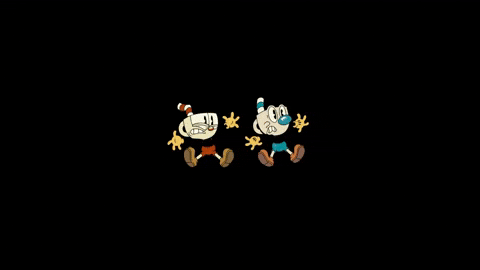
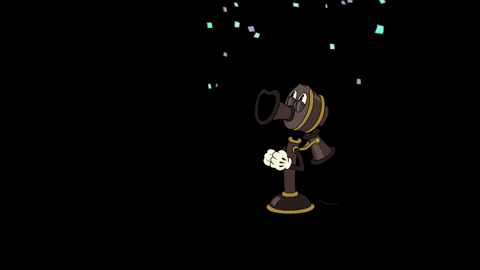
“Corporate Cuphead”: The Style in Modern Branding
Perhaps the most significant indicator of the style’s revival, especially for a marketing-focused audience, is its widespread adoption in corporate branding, advertising, and illustration—a trend sometimes dubbed “Corporate Cuphead”. Brands are increasingly turning to the Rubberhose aesthetic to inject personality, whimsy, and a sense of handcrafted charm into their marketing.
This trend is a direct and pointed reaction against the visual homogeneity of the “Corporate Memphis” style—the ubiquitous, flat, geometric, and often disproportionate human figures that have dominated tech and corporate illustration for the past decade. As Corporate Memphis became oversaturated, it began to be perceived by consumers and designers as generic, impersonal, and inauthentic. The Rubberhose style offers the perfect antidote. It is expressive, chaotic, and overflowing with personality. It feels nostalgic and handmade, which in today’s digital landscape, can signal authenticity and a sense of humor. Classic brand mascots like Planters’ Mr. Peanut and Monopoly’s Mr. Monopoly have been featured in modern advertisements utilizing Rubberhose gags and techniques to leverage this nostalgic appeal.
The modern corporate adoption of the Rubberhose style is therefore more than just a fleeting trend or a simple appeal to nostalgia. It is a strategic pivot in visual communication. After a long period of minimalist reduction, where brands stripped their identities down to the simplest geometric forms, many are now engaged in a cyclical return to character and personality. In a crowded and visually monotonous digital marketplace, the ability to stand out, to communicate a unique voice, and to create an emotional connection is at a premium. The bouncy, grinning, and anarchic figures of the Rubberhose world, born in the Great Depression, have found a new purpose in the 21st century: to offer a joyful, human-feeling alternative to the soullessness of the corporate algorithm.
Conclusion: The Enduring Elasticity of an American Art Form
The journey of Rubberhose animation is a remarkable century-long odyssey through the heart of American popular culture. It is a story that begins with pragmatic ingenuity, blossoms into surreal artistry, recedes in the face of a new technological and business paradigm, and finally, stages an improbable and triumphant return in the digital age.
Born from the high-pressure production lines of the 1920s, the style’s signature jointless limbs and simplified forms were a brilliant solution to an industrial problem, a “design system” for an era of ink and celluloid. In the hands of pioneers like Otto Messmer, the Fleischer brothers, and the Disney-Iwerks partnership, this efficient methodology became a vehicle for boundless creativity. It gave rise to a universe untethered from reality, a “plastic world” of perpetual motion and rhythmic chaos that produced animation’s first global superstars and established the medium as a dominant force in entertainment.
The style’s decline in the mid-1930s was as swift as its rise was meteoric. Driven by Walt Disney’s strategic vision of a more realistic, emotionally resonant, and cinematically prestigious art form—and enabled by transformative technologies like Technicolor and the multiplane camera—the industry pivoted. The anarchic, two-dimensional energy of Rubberhose gave way to the structured, physics-bound world of the 12 Principles, a necessary evolution for the birth of the animated feature film and the modern animation industry.
Yet, the story did not end there. A century after its creation, the Rubberhose aesthetic has demonstrated a profound and enduring elasticity. Resurrected with breathtaking authenticity in the video game Cuphead, its visual language has been reintroduced to a new generation. Today, its influence is everywhere, from nostalgic television reboots to the very forefront of corporate branding, where its handcrafted charm serves as a vibrant rebellion against digital sterility. The distinction between the classic, hand-drawn style and the modern, efficient tool that bears its name encapsulates the evolution of creative work itself—a constant interplay between historical craft and technological innovation.
The timeless appeal of Rubberhose animation ultimately lies in its purity of expression. It is the art of animation at its most fundamental and uninhibited—a joyous celebration of movement, rhythm, and imagination for their own sake. For the modern creator, marketer, and business leader, its legacy offers a powerful and surprisingly relevant lesson. A century later, the core principles that drove its success—efficiency born of constraint, clarity of communication, and the power of personality-driven engagement—remain essential. The story of Rubberhose reminds us that sometimes, the most innovative and effective solutions are found not by chasing the next fleeting trend, but by looking back to the foundational, time-tested creativity of the past.
This infographic was created by Teracore, your trusted partner in enterprise-level marketing, development, and design. We provide cutting-edge solutions to help your business scale.





